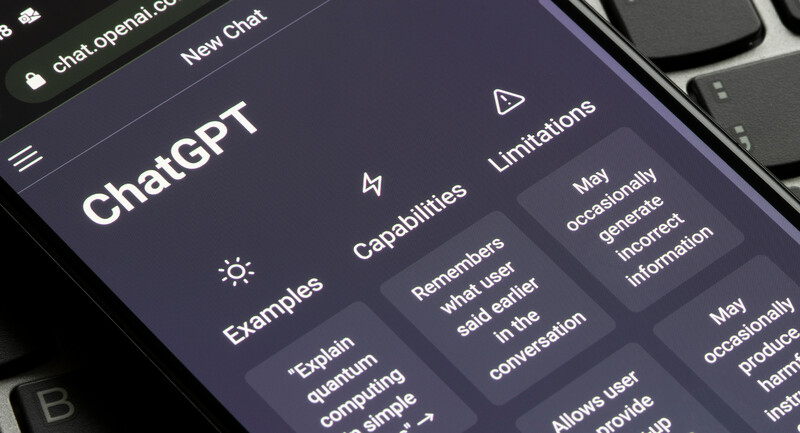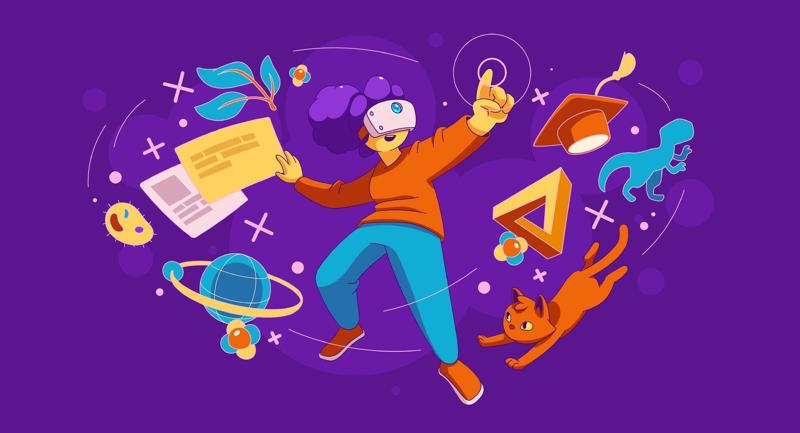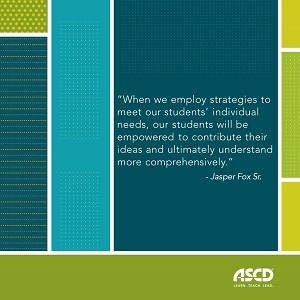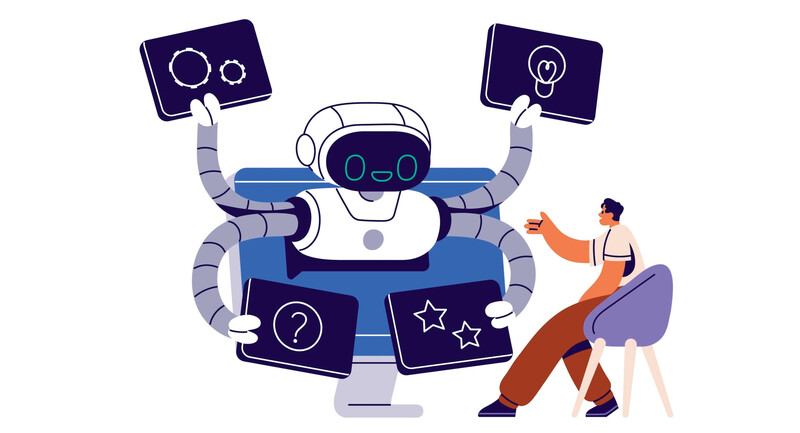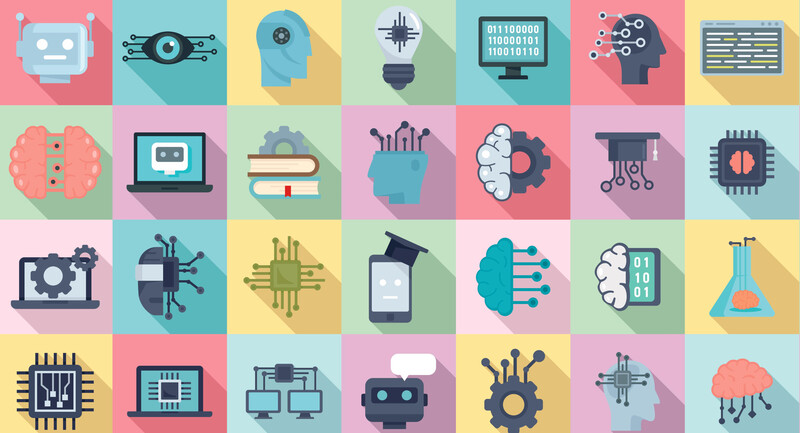“You’ve got to see this.”
That’s what my colleague said to me just moments before opening ChatGPT, the new artificial intelligence-driven writing app. He typed, “Write a limerick on fly fishing.”
At the push of a button, a flashing cursor revealed this:
There once was a fly fisherman bold,
Whose skills were both new and old.
He cast with such grace,
In a secret fishing place,
And caught fish, both big and small, I'm told.
The moment was reminiscent of the first time I used a digital camera, accessed the nebulous “internet,” or test drove our electric car: the ground was shifting and things were never going to be quite the same. Later that evening my phone buzzed with a text from my 18-year-old son saying that the ChatGPT site had shattered the time it took to reach 1 million users: 5 days. Facebook took 6 months.
ChatGPT, which was developed by a company called Open AI, dominated the week following. My email lit up with questions and comments from educators. I surfed the internet. Our district held meetings.
The themes were pretty consistent. They largely surrounded queries like, “Is writing dead?” “Can we no longer use computers or tablets for in-class writing?” “How will teachers police this?” There were more questions than answers. The “Chicken Little” record I owned on vinyl as a kid came blaring into my consciousness: “The sky is falling, I’m off to tell the king!”
In the weeks since, the dust has settled a bit, and I’ve had some time to think about this new technology. Let’s be clear, none of us can possibly claim to know where this is going. Some argue that the human race has finally produced a technological advancement that will lead to mass unemployment (which has been claimed with most technological advancements but has yet to occur), while others see this as a tool that will perform amazing, constructive features such as narrow socioeconomic disparity, predict natural disasters, and . . . improve education.
I don’t claim to be able to make such prognostications. But I do believe that school leaders and educators need to get in front of this technology and look for ways to use this tool for its incredible potential to enhance instruction—and the way our students use and understand information. Our students need us to surf this wave with them rather than lunging for the life jackets.
In the short-term, here are some ways I think schools can start to adapt, integrate, and perhaps dabble with this intriguing new technology.
1. Don’t ban it.
While banning use of ChatGPT by students is tempting—and I’ve seen a few stories of schools moving in this direction—so far my school district has decided to not ban the platform. I support this decision for a few reasons. First, shutting down the use of this technology will be incredibly difficult to manage. Today it’s ChatGPT, but by the time you read this, Google may have already launched its version of AI, called Sparrow. Microsoft is looking to embed additional AI tools in Word. Second, we have limited resources and trying to control readily accessible tech is not going to be a good use of them. Third, and most important, educating our students and ourselves about AI is almost certainly a better bet for long-term success. Students need us to help them make sense of this powerful technology and use it creatively—not turn a blind eye to it. Institutions that try in vain to restrict AI will only send it underground, and consequently be oblivious to how students are using, or abusing, it.
Students need us to help them make sense of this powerful technology and use it creatively—not turn a blind eye to it.
2. Talk about it.
I remember taking on previous changes in my classroom such as allowing for retesting, not grading certain homework assignments, and sharing learning targets. With each change in my teaching practice, I learned the best way to navigate it was to bring it into the open, discuss it with students, and get their perspective, opinions, and insights. I suspect the same will be true of AI. I recently spoke to Marcus Blair, a high school English language arts teacher in my school district. He told me one of the first steps he took was to have a class discussion on ChatGPT. As he wrote to me:
We spoke about ChatGPT, what it's capable of doing, what one could use it for, and also how one shouldn't use it in place of their own ideas and learning. Students and myself first marveled at its capabilities. But we also agreed about how misrepresenting its responses as our own learning is unethical. I stressed that I'd rather they take a couple extra days to finish something than resort to having AI do it in their stead.
I think when we model openness it compels students to do the same. Let’s not forget this is new for us and our students. Having an open conversation allows teachers like Blair to marvel at this new technology, manage it, embrace it, and navigate its potential uses and challenges.
3. Create engaging, relevant, and personalized assessments.
As anyone who has read my ASCD books knows, I have long argued that assessment should be grounded as much as possible in the predictability, safety, and structure of the classroom. Plagiarism is not new. Generations of students have known that whenever grades are awarded for written work, you can get others to do it for you (or cobble it together from print or online resources) and claim it as your own. With each historical leap in technology, such as Microsoft Encarta, AOL, and Google (not to mention countless online paper-writing services), the act of outsourcing one’s writing assignments got faster and easier. Perhaps ChatGPT will provide a service to education by finally ripping off the “Band-Aid” and making it crystal clear to everyone that high-quality information is readily available for students to crib from. This in turn may lead us to recognize that the most viable way to assess student writing on a personal and accurate level is to conduct those assessments in class, or to embed them in an authentic performance task. We might also think about forgoing traditional essays at times and giving students the option to explore other ways to communicate their learning—such as in short videos, podcasts, or multimedia presentations.
At the same time, it might help us to realize that the more we can inject in our instruction and assignments personalized elements from our communities and our students’ lives, the harder it will be for AI to conjure up relevant fodder for them. In the process, we will also likely heighten students’ personal investment in their learning. Perhaps it’s high time that we even encouraged students to both design and respond to their own inquiry questions. (For an example of what I mean, check out the “Pizza Inquiry Project” that Blair and I designed.) 4. Get to know your students’ writing and help them improve it!
In terms of writing instruction, ChatGPT is mainly a problem if we don’t have a good sense of our students’ writing in the first place. When I was teaching high school social studies, I made sure to utilize short in-class writing exercises, exit slips, and other formative assessment “check-ins.” Typically, these activities involved a quick write or diagram using a pen and paper. It was personal, we didn’t need a cart of laptops, and it gave me a pretty good window for how each of my students communicated their ideas. I could use these quick writes to get instant feedback on the effectiveness of the lesson, shape the next day’s activity, give personalized feedback and help develop a student’s writing voice, and build community through getting to know my students. In the rare cases that a student submitted writing on a formal paper or essay that was significantly different than the baseline level of communication we’d established, I could take steps to investigate.
In terms of writing instruction, ChatGPT is mainly a problem if we don’t have a good sense of our students’ writing in the first place.
5. Harness the learning power of AI—for students.
Whatever fears we have about AI, we must acknowledge it’s here to stay and it will almost certainly play an increasingly significant role in our students’ lives and careers. With this in mind, it’s important for us to help them—in the safe, structured settings that classrooms provide—get familiar with it and use it in ways that can empower them.
There is now a growing body of examples of how educators can leverage the power of AI and ChatGPT in particular for student learning. To add to the recommendations, here are a couple I would deploy if I were teaching social studies right now—each designed to allow the technology to do the basic work while boosting students’ capacity for critical thinking and analysis.
Activity 1: Pick a controversial topic and ask ChatGPT to write a short essay including references.
a. “Fact-check” the claims made and references used by ChatGPT. (As many users are becoming increasingly aware, the program has a tendency to make factual and citation errors.)
b. Plot the points made on the political spectrum and/or check for political leanings.
c. Write a counter argument.
Activity 2: Give ChatGPT a complex command, then have students fill in the blanks.
I typed the following into ChatGPT:
Analyze the ways in which the United States sought to exert influence abroad during the Cold War.
The resulting paragraph was well “written” and included six seemingly good points. However, it didn’t include a shred of specific supporting evidence nor references. A great student assignment would be to get the students to add these features.
Those are just two examples from my own subject area. I have colleagues in English language arts who use ChatGPT to demonstrate specific writing skills and generate drafts for editing and revision.
6. Harness the learning power of AI—for teachers.
The ways in which ChatGPT can support teachers both administratively and pedagogically may be where its real potential lies for education. For instance, for the past decade or more, I have been trying to help teachers navigate a shift to standards-based grading. With the emergence of ChatGPT, we might need to broaden who we include in the conversation. I recently walked down the hall and knocked at the door of our district’s director of information technology, Matt Williams. Together we explored how we might leverage ChatGPT to help teachers better understand and incorporate AI in a standards-based approach.
We asked the program: “What are the writing standards for grade 4 students in BC [British Columbia]?’”
The program produced a few of them, with decent accuracy. We then asked ChatGPT, “Can you write an example of a grade 4 paragraph that would meet these standards?”
It did, and even explained how the paragraph met the identified standards. We then asked it to produce a multiple-choice quiz to check for reading comprehension of the paragraph it wrote.
ChatGPT supplied four questions and an answer key.
Lastly, we asked for an open-ended question that would assess deeper understanding. We got that too, and it was quite good. ChatGPT even explained why the question was appropriate to assess understanding.
If you had told me a year ago that I could use a computer program, on my own laptop, to look up learning standards anywhere in the world, and help design unique assessments for these standards, I wouldn’t have believed you. Now I think the power of a tool like this for teachers is limited only by my own presumptions. Once we begin to experiment and imagine, this program may vastly increase our professional knowledge and repertoire.
Navigate the World of Artificial Intelligence and ChatGPT
Dive deeper into AI and learn how to navigate ChatGPT in schools with curated resources and tools from ASCD and ISTE (International Society for Technology in Education).
Evolving Technology, Evolving Practices
The other evening I was listening to NPR, and they reported that ChatGPT was set to introduce a feature that allows teachers and professors to detect if something is written by AI. This suggests that the folks at OpenAI really do want to work with educators on bettering learning, rather than jeopardizing it.
Writing—and the importance of writing—will not go away, but we will be challenged to blend new technologies with the teaching of it. The hope I have for ChatGPT is that we might truly be forced to explore ways to stay one step ahead of technology and embrace more effective ways of teaching and learning while we do it.
And by the way, I asked ChatGPT if the sky was falling, and apparently it’s “just a figure of speech as the sky remains in its current position.”



